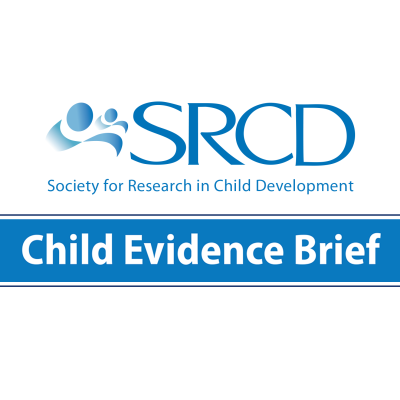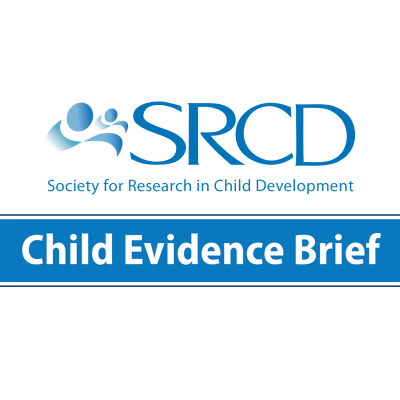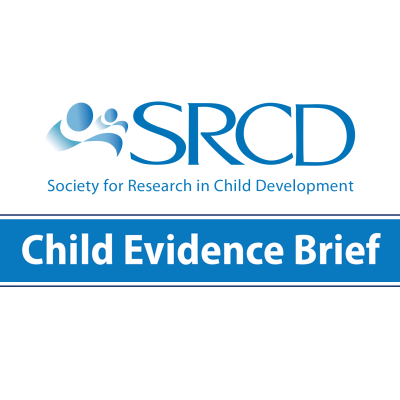Family-Focused Approaches to Opioid Addiction Improve the Effectiveness of Treatment
Edited by Rebekah Levine Coley, Ph.D., Boston College.
For more information, contact Kelly R. Fisher, Ph.D., Director for Policy, Society for Research in Child Development, at policy@srcd.org.
Authors
- Helena J.V. Rutherford, Ph.D., Yale Child Study Center, Yale School of Medicine
- Declan T. Barry, Ph.D., Department of Psychiatry, Yale School of Medicine
- Linda C. Mayes, M.D., Yale Child Study Center, Yale School of Medicine
In treating opioid addiction, moving from an individual approach to a family-focused approach to treatment can have lasting benefits for children and parents, and decrease health care costs. In 2017, the U.S. Department of Health and Human Services declared opioid addiction a public health emergency. Opioids—which include prescription medicines for pain relief, synthetic drugs such as fentanyl, and heroin1 —lead to an average of 115 deaths by overdose per day in the United States.2,3 The medical and legal response has mainly focused on individual needs, yet opioid addiction has wide-ranging impacts not only on individuals, but also on their families and children. New evidence finds that family-focused approaches can improve upon models that treat individuals, expanding benefits and cost efficiencies, and improving the health and development of children.
Opioid Addiction Affects Whole Families, With Important Implications for Children
Parents’ opioid addiction affects children’s development from the prenatal stage through adulthood. These effects occur both directly, through biological and neurological processes, and indirectly, through compromised parenting and family stress.
- Since 2000, the number of infants born with neonatal abstinence syndrome has increased fivefold; these infants experience opioid withdrawal after exposure in utero. Neonatal abstinence syndrome increases hospital stays at an estimated annual cost of $1.5 billion,4,5 and can induce tremors, seizures, irritability, disrupted sleep, and intense crying in infants.6
- Neuroscience research suggests that parents with addiction show compromised functioning in areas of the brain critical to caregiving, including areas that regulate stress and process emotions.7,8 In turn, parents with addiction struggle with the stresses of childrearing, leading to less sensitive and supportive parenting, which may hinder children’s social and emotional development.8
- Parents with substance use disorders often raise children in chaotic and impoverished households,9 contexts that have been shown to impede children’s development and lead to detrimental health outcomes in adolescence and adulthood.10,11
- Over the long term, parents’ opioid addiction, coupled with chaotic home environments, increase the chances that children will engage in substance use,12,13 setting the stage for intergenerational drug abuse and lifelong health consequences for children.14
- In some states, under child-endangerment laws, parents who use opioids and other illicit drugs during pregnancy are automatically referred to child protective services.15 These laws can result in parental incarceration and children’s removal from their home. Applying such approaches indiscriminately without adequate opportunities for treatment can harm family stability and children’s mental health.16,17
Current Treatment Options Are Limited
The gold standard treatment option for adult opioid addiction is the controlled administration of prescribed methadone or buprenorphine, termed opioid agonist treatment.18,19 For pregnant women, this treatment optimizes maternal and neonatal outcomes after birth.19 Yet access is limited by cost constraints and lack of coverage through Medicaid and private insurance.18 Even for parents who have access, opioid agonist treatment programs often overlook the impact of opioid addiction on children and families. Similarly, programs rarely attend to the cooccurrence of addiction and other mental health issues.20 Other treatment approaches that are often easier to afford, such as medically supervised discontinuation of opioid use during pregnancy, have high relapse rates and less maternal engagement in prenatal care, and do not provide postnatal parenting support essential for healthy child development.21
Family-Focused Treatment Models Can Fill Gaps and Improve Children’s Well-Being
Because opioid addiction affects not only parents but also children and families, we need family-focused treatment models that attend to the needs of, and optimize outcomes for, both parents and children. Current treatment approaches fall short in meeting these goals, yet there are successful models that can inform improvements in treatment. Specifically, evidence suggests the need for coordinated and family-focused treatment models, particularly those that promote effective parenting. Numerous family-focused models have proven effective. Research shows that:
- Evidence-based programs that combine opioid agonist treatment with efforts to help opioid-addicted parents regulate their emotions, lower their stress, and find pleasure in their caregiving role have led to decreases in the severity of maternal addiction as well as improved well-being for mothers and children.22,23,24
- Among families with infants born with neonatal abstinence syndrome, strategies to empower mothers by supporting their direct involvement in the care of their infants have resulted in reduced hospital stays, decreased hospital costs, and less treatment involving pharmacologic withdrawal for newborns.25
- Other promising approaches seek to extend family-focused support to opioid-addicted women during pregnancy to lay the groundword for mother-child relationships and decrease substance use before babies are born.26
Critical Next Steps for Targeting Opioid Addiction and Improving the Lives of Children and Families
Family-focused approaches have beneficial effects on multiple family members and may reduce overall health care costs. We now need carefully planned expansions of family-focused treatment models with continued evaluations to determine when and for whom such treatments are appropriate and most effective, and how integrated care models can best maximize the efficacy of opioid agonist treatment and address co-occurring medical and psychiatric conditions.
Endnotes / References
(1) National Institute of Drug Abuse (2018). Opioids. Retrieved April 17, 2018, from https://www.drugabuse.gov/drugs-abuse/opioids.
(2) Hedegaard, H., Warner, M, & Miniño, A.M. (2017). Drug overdose deaths in the United States, 1999-2015. NCHS Data Brief, no 294.Hyattsville, MD: National Center for Health Statistics.
(3) Center for Disease Control and Prevention (2017). Wide-ranging online data for epidemiologic research (WONDER). Atlanta, GA: Center for Disease Control, US Department of Health and Human Services, https://wonder.cdc.gov/.
(4) Patrick S.W., Davis, M.M., Lehmann, C., & Cooper, W.O. (2015). Increasing incidence and geographic distribution of neonatal abstinence syndrome: United States 2009 to 2012. Journal of Perinatology, 35, 650-655.
(5) Patrick, S.W., Schumacher, R.E., Benneyworth, B.D., Krans, E.E., McAllister, J.M., & Davis, M.M. (2012). Neonatal abstinence syndrome and associated health care expenditures: United States, 2000-2009. Journal of the American Medical Association, 307,1934-1940.
(6) Kocherlakota, P. (2014). Neonatal abstinence syndrome. Pediatrics,134, e547-e561.
(7) Rutherford, H.J.V., Williams, S.K., Moy, S., Mayes, L.C., & Johns, J.M. (2011). Disruption of maternal parenting circuitry by addictive process: Rewiring of reward and stress systems. Frontiers in Psychiatry, 2,37.
(8) Rutherford, H.J.V., Potenza, M.N., & Mayes, L.C. (2013). The neurobiology of addiction and attachment. In N. Suchman, M. Pajulo, & L.C. Mayes (Eds.), Parents and substance addiction: Developmental approaches to intervention. New York, NY: Oxford University Press.
(9) Lander, L., Howsare, J., & Byrne, M. (2013). The impact of substance use disorders on families and children: From theory to practice. Social Work in Public Health, 28, 194-205.
(10) Dube, S.R., Felitti, V.J., Dong, M., Chapman, D.P., Giles, W.H., & Anda, R.F. (2003). Childhood abuse, neglect, and household dysfunction and the risk of illicit drug use: The adverse childhood experiences study. Pediatrics, 111, 564-572.
(11) Felitti, V. J., Anda, R. F., Nordenberg, D., Williamson, D. F., Spitz, A. M., Edwards, V., ... & Marks, J. S. (1998). Relationship of childhood abuse and household dysfunction to many of the leading causes of death in adults. The Adverse Childhood Experiences (ACE) Study. American Journal of Preventative Medicine, 14, 245-258.
(12) McCrory, E., & Mayes, L.C. (2015). Understanding addiction as a developmental disorder: An argument for a developmentally informed multilevel approach. Current Addiction Reports, 2, 326-330.
(13) Mayes, L.C, & Suchman, N.E. (2006). Developmental pathways to substance abuse. In D. Cicchetti & D.J. Cohen (Eds.), Developmental psychopathology. Hoboken, NJ: John Wiley & Sons, 599-619.
(14) Rutherford, H.J.V., & Mayes, L. (2017). Parenting and addiction: Neurobiological insights. Current Opinion in Psychology, 15, 55-60.
(15) Patrick, S.W., & Schiff, D.M. (2017). A public health response to opioid use in pregnancy. Pediatrics, 139, e20164070.
(16) Rodriguez, N., & Turanovic, J.J. (2018). Impact of incarceration on families and communities. In J.D. Wooldredge & P. Smith (Eds), The Oxford Handbook of Prisons and Imprisonment. New York, NY: Oxford University Press.
(17) Turanovic, J.J., & Rodriguez, N. (2017). Mental health service needs in the prison boom: The case of children of incarcerated mothers. Criminal Justice Policy Review, 28, 415-436.
(18) National Institute of Drug Abuse (2016). Effective treatments for opioid addiction. Retrieved May 19, 2018, from https://www.drugabuse.gov/publications/effective-treatments-opioid-addiction/effective-treatments-opioid-addiction
(19) National Institute of Drug Abuse (2017). Treating opioid use disorder during pregnancy. Retrieved May 19, 2018, from https://www.drugabuse.gov/publications/treating-opioid-use-disorder-during-pregnancy/treating-opioid-use-disorder-during-pregnancy
(20) Strain, E.C. (2002). Assessment and treatment of comorbid psychiatric disorders in opioid-dependent patients. The Clinical Journal of Pain, 18, S14-S27.
(21) Jones, H.E., Terplan, M., & Meyer, M. (2017). Medically assisted withdrawal (detoxification): Considering the mother-infant dyad. Journal of Addiction Medicine, 11, 90-92.
(22) Suchman, N.E., Pajulo, M., DeCoste, C., & Mayes, L.C. (2006). Parenting interventions for drug‐dependent mothers and their young children: The case for an attachment‐based approach. Family Relations, 55, 211-226.
(23) Suchman, N.E., Decoste, C., Mcmahon, T.J., Rounsaville, B., & Mayes, L.C. (2011). The mothers and toddlers program, an attachment‐based parenting intervention for substance‐using women: Results at 6‐week follow‐up in a randomized clinical pilot. Infant Mental Health Journal, 32, 427-449.
(24) Suchman, N.E., DeCoste, C.L., McMahon, T.J., Dalton, R., Mayes, L.C., & Borelli, J. (2017). Mothering from the inside out: Results of a second randomized clinical trial testing a mentalization-based intervention for mothers in addiction treatment. Development and Psychopathology, 29, 617-636.
(25) Grossman, M. R., Berkwitt, A. K., Osborn, R. R., Xu, Y., Esserman, D. A., Shapiro, E. D., & Bizzarro, M. J. (2017). An initiative to improve the quality of care of infants with neonatal abstinence syndrome. Pediatrics, 139, e20163360.
(26) Pajulo, H., Pajulo, M., Jussila, H., & Ekholm, E. (2016). Substance‐abusing pregnant women: Prenatal intervention using ultrasound consultation and mentalization to enhance the mother-child relationship and reduce substance use. Infant Mental Health Journal, 37, 317-334.


